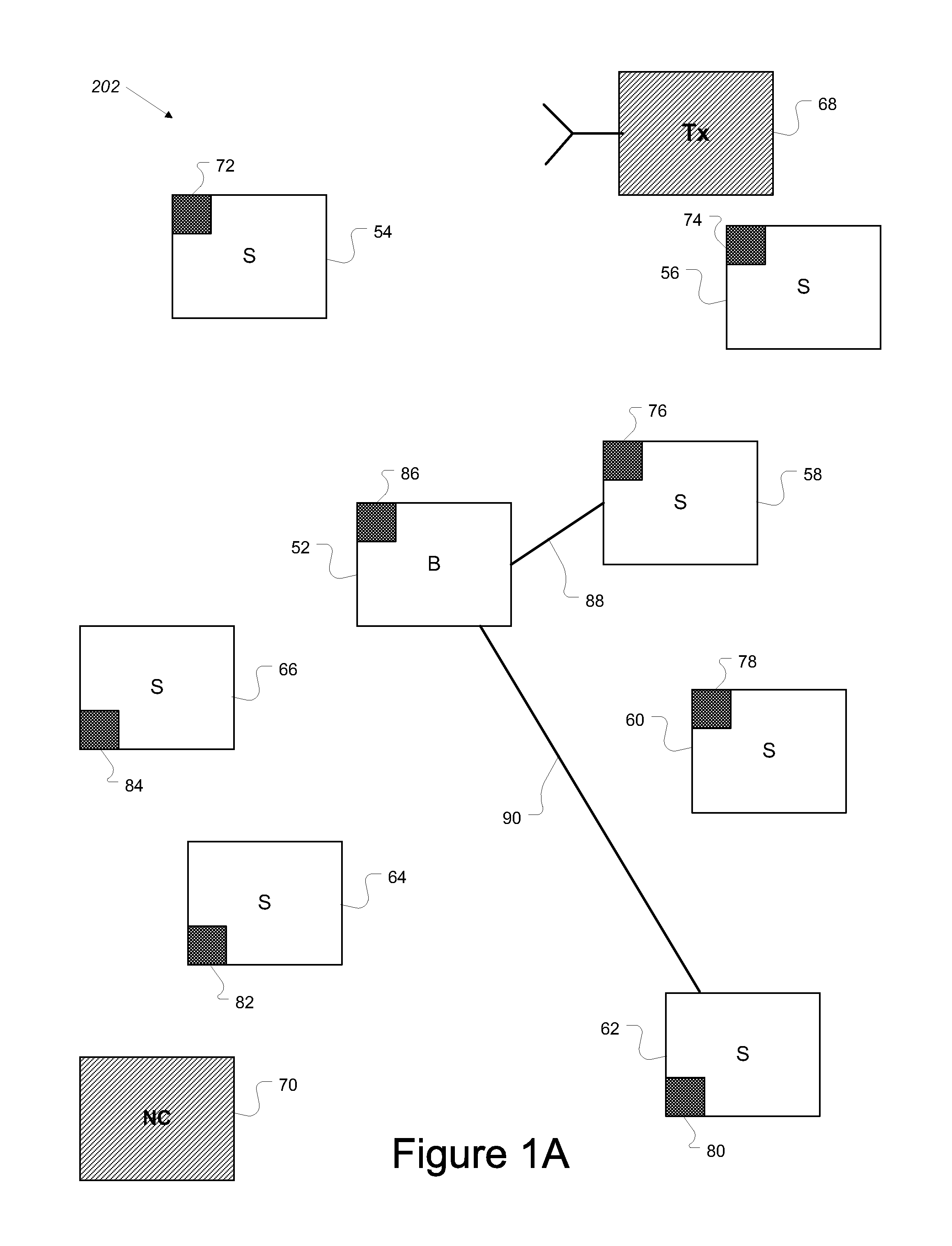Methods for using a detector to monitor and detect channel occupancy
a detector and channel technology, applied in the field of monitoring channels, can solve problems such as network offline, inability to solve, and other forms of potential interference, and achieve the effects of avoiding interference, avoiding interference, and avoiding interferen
- Summary
- Abstract
- Description
- Claims
- Application Information
AI Technical Summary
Benefits of technology
Problems solved by technology
Method used
Image
Examples
Embodiment Construction
[0024]Reference will now be made in detail to the preferred embodiments of the present invention. Examples of the preferred embodiments are illustrated in the accompanying drawings.
[0025]FIG. 1A depicts a network 202 including stations according to the disclosed embodiments. Network 202 allows communication and data exchange between the stations. Network 202 is not limited by geography, frequency spectrum or configuration. Network 202 must avoid interfering with other networks or transmitters and operates on a frequency not in use by other transmission sources. Once any interference is detected, network 202 switches from the present operating frequency to another.
[0026]Network 202 includes base station 52 and subscriber stations 54, 56, 58, 60, 62, 64 and 66. The number of stations within network 202 is shown for illustrative purposes only. The number of stations within network 202 is not limited to the amount shown in FIG. 1, and may include any number of stations. Further, network...
PUM
 Login to View More
Login to View More Abstract
Description
Claims
Application Information
 Login to View More
Login to View More - R&D
- Intellectual Property
- Life Sciences
- Materials
- Tech Scout
- Unparalleled Data Quality
- Higher Quality Content
- 60% Fewer Hallucinations
Browse by: Latest US Patents, China's latest patents, Technical Efficacy Thesaurus, Application Domain, Technology Topic, Popular Technical Reports.
© 2025 PatSnap. All rights reserved.Legal|Privacy policy|Modern Slavery Act Transparency Statement|Sitemap|About US| Contact US: help@patsnap.com



